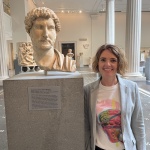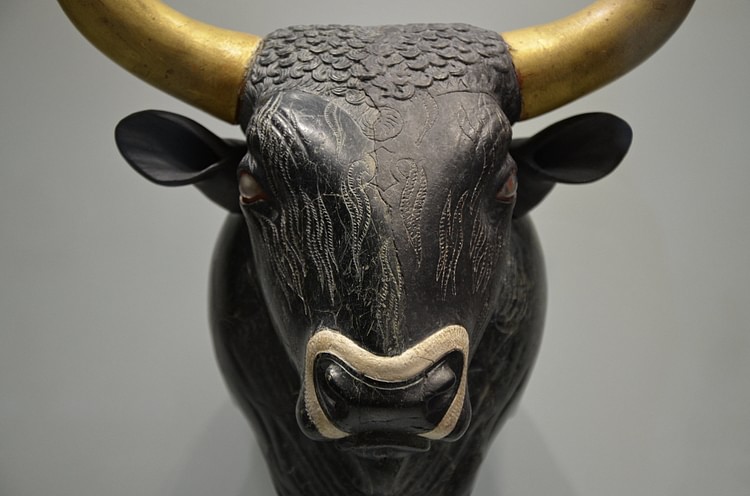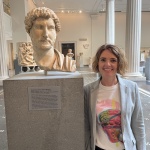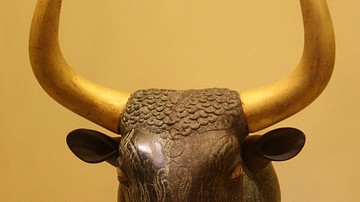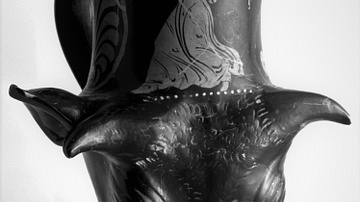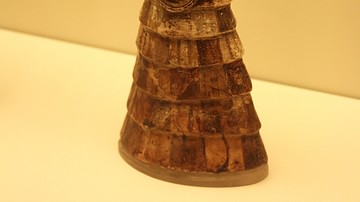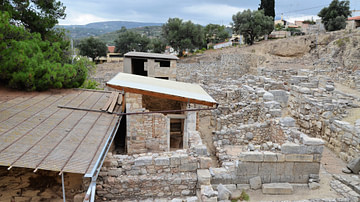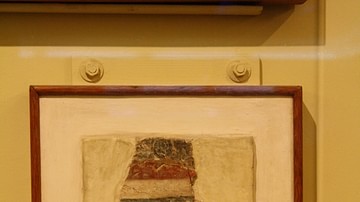Server Costs Fundraiser 2024
Illustration
Bull’s head rhyton from the palace at Knossos in Crete. The carving, from a single block of black steatite, is remarkable for it was worked with great precision to render the natural features of the real animal. The eyes are inlaid with rock crystal, with rim and iris of red jasper while the snout is outlined with an inlay of white seashell. The rhyton was used as a ritual vessel for pouring liquids (libation). It dates to the Neopalatial period, c. 1600-1450 BCE. The left side of the bull’s head and left ear, as well as its golden horns, were restored by Sir Arthur Evans. Heraklion Archaeological Museum.
About the Author
Cite This Work
APA Style
Raddato, C. (2019, May 08). Bull’s Head Rhyton from Knossos. World History Encyclopedia. Retrieved from https://www.worldhistory.org/image/10587/bulls-head-rhyton-from-knossos/
Chicago Style
Raddato, Carole. "Bull’s Head Rhyton from Knossos." World History Encyclopedia. Last modified May 08, 2019. https://www.worldhistory.org/image/10587/bulls-head-rhyton-from-knossos/.
MLA Style
Raddato, Carole. "Bull’s Head Rhyton from Knossos." World History Encyclopedia. World History Encyclopedia, 08 May 2019. Web. 26 Jul 2024.
